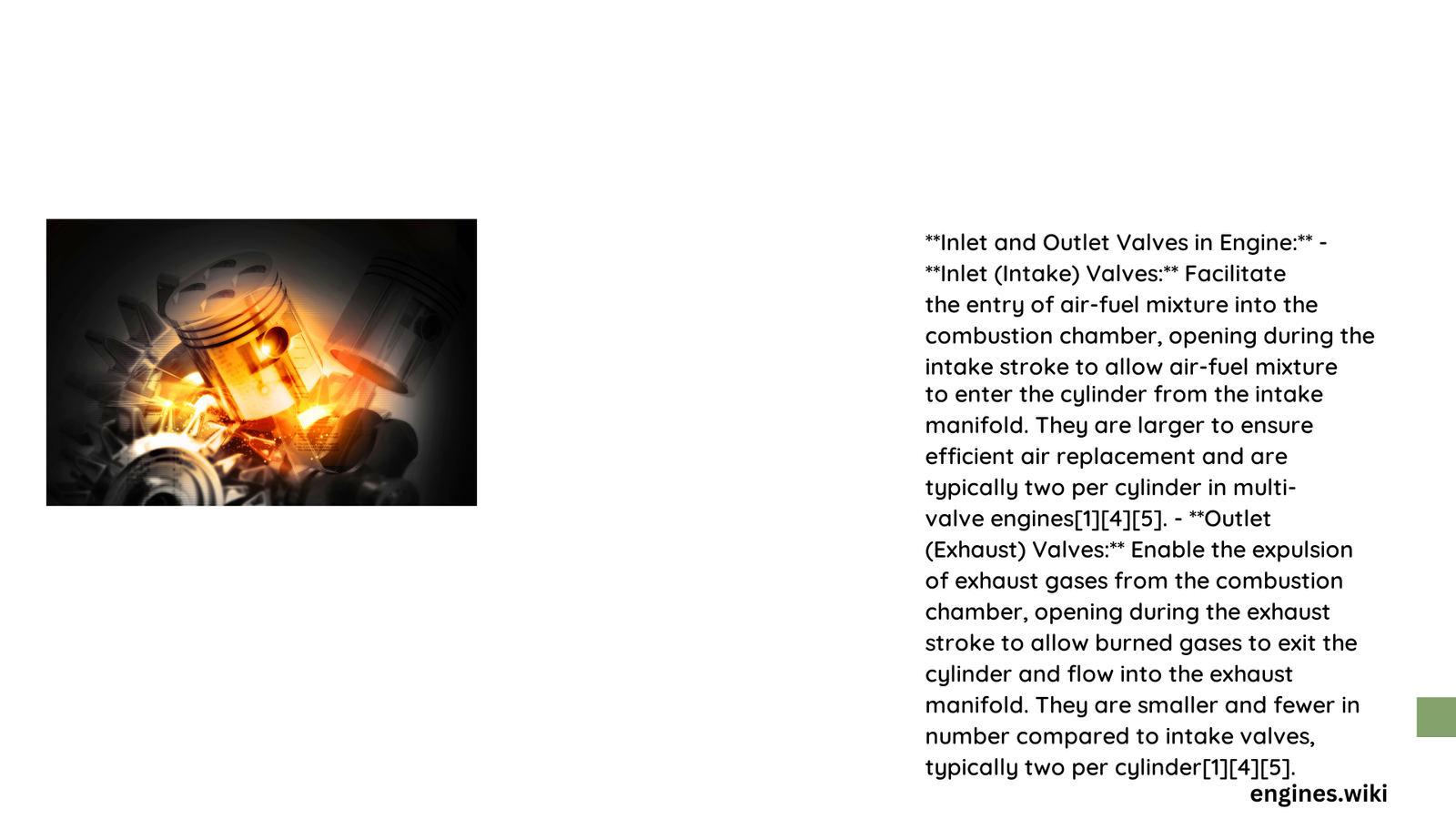Inlet and outlet valves are fundamental components in internal combustion engines, responsible for controlling the flow of air-fuel mixture and exhaust gases. These precision-engineered components play a crucial role in determining an engine’s overall performance, efficiency, and power output. Understanding their intricate design, function, and optimization can provide profound insights into automotive engineering and mechanical dynamics.
What Are Inlet and Outlet Valves?
Inlet and outlet valves are mechanical components located in an engine’s cylinder head, designed to manage the critical processes of air intake and exhaust gas expulsion. Their primary functions include:
- Inlet Valve: Allows air-fuel mixture into the combustion chamber
- Outlet Valve: Enables exhaust gases to exit the combustion chamber
How Do Valve Diameters Impact Engine Performance?
Valve diameter significantly influences an engine’s breathing capacity and overall performance. Consider these key specifications:
| Valve Type | Typical Diameter Range | Performance Impact |
|---|---|---|
| Intake Valve | 30-35 mm | Increased air-fuel mixture volume |
| Exhaust Valve | 25-30 mm | Enhanced exhaust gas evacuation |
Factors Affecting Valve Diameter Selection
- Engine displacement
- Intended performance characteristics
- Combustion chamber design
- Cylinder configuration
What Determines Optimal Valve Lift?

Valve lift represents the maximum distance a valve opens from its seated position. Critical considerations include:
- Typical Lift Range: 8-12 mm
- Performance Implications:
- Higher lift increases air-fuel mixture volume
- Excessive lift can reduce volumetric efficiency
- Balanced lift ensures optimal combustion
Valve Timing Strategies
Precise valve timing is crucial for maximizing engine performance. Key timing parameters include:
- Intake Valve Timing:
- Opening: 10-20 degrees before top dead center
-
Closing: 40-60 degrees after bottom dead center
-
Exhaust Valve Timing:
- Opening: 40-60 degrees before bottom dead center
- Closing: 10-20 degrees after top dead center
What Challenges Exist in Valve Design?
Engineers face multiple challenges when optimizing inlet and outlet valves:
- Material selection for durability
- Thermal management
- Minimizing friction
- Balancing performance with efficiency
Advanced Valve Technology Considerations
Modern engines employ sophisticated valve technologies:
- Variable valve timing (VVT)
- Lightweight materials
- Advanced coatings
- Precision manufacturing techniques
How Do Valves Influence Fuel Efficiency?
Valve design directly impacts fuel consumption through:
- Improved air-fuel mixture management
- Reduced pumping losses
- Enhanced combustion efficiency
- Optimized volumetric performance
Emerging Trends in Valve Technology
- Electromechanical valve systems
- Adaptive valve control
- Lightweight composite materials
- Enhanced computational modeling
Conclusion
Inlet and outlet valves represent critical engineering components that significantly influence an engine’s overall performance, efficiency, and longevity. Continuous technological advancements promise even more sophisticated valve designs in future automotive applications.
